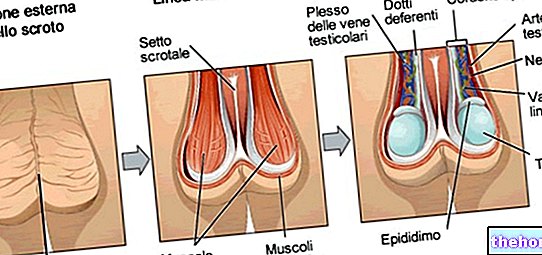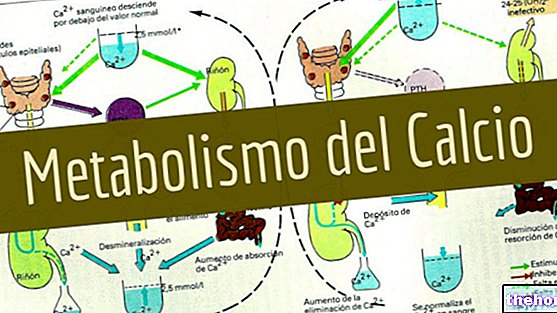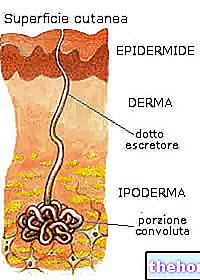Red fibers VS white fibers

Later more accurate classifications have been proposed that consider specific parameters such as the MEASUREMENT of the speed of contraction and the METABOLIC prevalence of muscle fiber cells.
Today, all known parameters are UNIFIED in the specific and detailed description of:
- slow fibers (red - type I - βr - Slow Oxidative [SO])
- intermediate fibers (light - type IIA - αr - Fast Oxidative Glycolytic [FOG])
- fast fibers (white - type IIB - αw - Fast Glycolytic [FG]).
In adult skeletal muscles there is a third type of fibers, called IIx, with intermediate characteristics between IIa and IIb.
Obviously each muscle contains a certain percentage of ALL the fibers and its composition is never 100% of one type or the other; furthermore, remember that:
- Between them, the various skeletal muscles have a composition of different fibers.
- Muscle predisposition is ALSO genetically determined.
- Muscle fibers can be partially specialized with training.
Characteristics of red fibers
Red fibers are functional units of skeletal muscle; they, like white fibers and those defined as "intermediate", are responsible for the transformation of chemical energy (adenosine tri phosphate - ATP) into mechanical or kinetic energy.
The red fibers have a color very similar to that of blood by virtue of some biochemical and structural characteristics; particularly:
- Dense capillary branches.
- High concentration of myoglobin, a storage protein (similar to the hemoglobin contained in red blood cells) which acts as a RESERVE of muscle oxygen.
- High concentration of mitochondria.
Compared to IIA and IIB, red fibers have a rather reduced speed of contraction; in ALL humans (and all mammals), the highest muscle concentration of red fibers is:
- In the muscles responsible for maintaining posture (e.g. spine supporters)
- In the muscles responsible for the "execution of" slow and repeated "movements (such as some muscles of the thigh and leg useful for walking, eg psoas-iliac and soleus).
Furthermore, the red fibers contain a large amount of mitochondria that work effectively in the oxidative (aerobic) energy production, supported by the great blood circulation of the dense capillary bed.
NB. Often in body-building the muscles table is varied - by increasing: 1. the repetitions 2. the series and 3. the volume of training - with the aim of partially favoring the increase in muscle mass, ALSO managing the proliferation of mitochondria and of the capillaries. In reality, while constituting a valid alternative in training cycling, it should be specified that, through this variant, the increase in mitochondria and capillaries is quite limited and does NOT significantly affect the increase in volume and overall muscle mass.
Ultimately, the red fibers are suitable for mild, slow and repeated efforts; they brilliantly resist fatigue even if they do not contain large volumes of glycogen (higher in fibers IIa and IIB).
To summarize the concepts expressed above, we refer to the critical reading of the following tables
Slow or red fibers or II
Fast or white fibers or IIb
Intermediate fibers or IIa
Atp production
Oxidative phosphorylation
(aerobic)
Glycolysis
(anaerobic lactacid)
Phosphocreatine
(anaerobic alactacid)
Oxidative phosphorylation
(aerobic)
Glycolysis
(anaerobic lactacid)
Intermediate characteristics
Color (myoglobin)
Intense red
Clear
Mitochondria
Numerous
Scarce
Fiber diameter
Small with many
capillaries
Great with a few
capillaries
Features
motor neuron
Small axon and body
cellphone, slow speed
of conduction e
discharge rate
Large axon and body
mobile phone, high speed of
conduction and frequency of
download
Speed of
fatigue
Slow
Quick
Characteristic
They maintain activity
toned for long
periods
They keep an activity
explosive and powerful for
a few moments
Percentage of slow and fast fibers present in human skeletal muscles (*)
Short adductor
Great adductor
Gluteus maximus
Ileo psoas
Pettineo
Psoas
Gracile
Semimembranous
Tensor of the fascia lata
Broad Intermediate Quadric. Femor.
Vasto Medial Quadric. Femor.
Soleus
Great dorsal
Brachial biceps
Deltoid
Rhomboid
Trapezium
Long adductor
Twins
Medium / small buttock
External / internal shutter
Piriform
Biceps femoris
Sartorio
Semitendinosus
Popliteal
Wide lateral
Quadric rectus femoris. Femor.
Tibialis anterior
Rectus abdomen
Brachioradialis
Grand Pectoral
Brachial triceps
Supraspinatus
45
55
50
50
45
50
55
50
70
50
50
75
50
50
60
45
54
45
50
50
50
50
65
50
50
50
45
45
70
46
40
42
33
60
15
15
20
--
15
20
15
15
10
15
15
15
--
--
--
--
--
15
20
20
20
20
10
20
15
15
20
15
10
--
--
--
--
--
40
30
30
50
40
30
30
35
20
35
35
10
50
50
40
55
46
40
30
30
30
30
25
30
35
35
35
40
20
54
60
58
67
40
Training: optimization of red fibers and specialization of intermediate fibers
Personally, I have always been of the idea that every athlete should make "predisposition" his strong point. Although apparently paradoxical, at times, favoring the development of a "natural" tendency can determine an absolutely incomparable increase in performance. Obviously, it is not possible to oppose the will of the student or the client ... if a potential marathon runner wants to become a weightlifter ... little remains to be done!
However, a method frequently underestimated by most personal trainers - and which (unexpectedly) is quite successful - is to PROMOTE athletic and motor development while respecting the physiological tendency of the athlete.
Practical example:
- Objective: development of the general resistant force
- Subject: singlet (middle distance runner) characterized by a genetic prevalence of red fibers
- Method: CIRCUIT TRAINIG (see the article resistant force)
According to this principle, the choice of the number of repetitions and the "intensity of exercise" could be oriented more on the aerobic component (sets of 7 "for each station) rather than aerobic / mixed anaerobic (sets of 3" for each station). In this way, the naturally present red fibers have the possibility of expressing their development to the maximum, both in structural terms (capillaries, mitochondria) and in biochemical and enzymatic terms (myoglobin, enzymes of the oxidative chain, etc.); at the same time, the intermediate fibers (always present even if in variable quantities) evolve on the basis of the preponderant stimulus (in this case AEROBIC).
The limit of this technique is obvious; using ONLY a training of this kind there is the possibility of significantly LIMITING the development of the athlete and insufficiently stimulating all the white-anaerobic muscle fibers ... but on the other hand, persisting in training a genetically poor "lactic acid power" it could mean:
- Obtain poor results on anaerobiosis
- Limit the development of the genetically strongest component.
The speech changes significantly in the eventuality in which the percentage of red and white fibers depends almost exclusively on the specialization of the intermediate fibers (IIA); if the quantity of the latter prevails over the others, the athlete will boast a greater ability to adapt to the stimulus, consequently, the training can be managed with greater freedom and also with more room for improvement.
Unfortunately, in addition to muscle biopsy, there are no PRECISE techniques that can evaluate the prevalence of one or the other fiber; on the other hand, aptitude tests are able to provide us with "good" information of a "metabolic" type, but in this case, understanding whether the red fibers are genetically determined or whether they are already specialized IIA fibers is very difficult.
Bibliography:
- Movement Neurophysiology. Anatomy, biomechanics, kinesiology, clinic - M. Marchetti, P. Pillastrini - Piccin - pages 29-30.
















.jpg)











